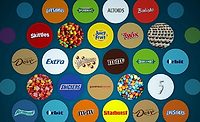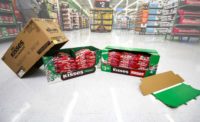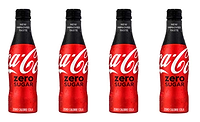If there’s one type of food that is expected to be completely safe, it’s baby food. And that’s what compelled the Italian brand Plasmon, which makes baby food and is part of the global Heinz Group, to install an aseptic filling machine from Bosch.
And while Plasmon saw its food safety improve with the new machine, offering just one fault per 30,000 products,there were additional benefits, says Rich Mueller, vice president of sales at Osgood Industries, part of Robert Bosch Packaging Technology GmbH since 2015. For example, it allowed Plasmon to reduce carbon dioxide emissions by 50 percent. And the newly introduced plastic pots the processor uses are 89 percent lighter than the glass jars that Plasmon previously used, which decreases shipping costs. The pots are also reusable and 100 percent recyclable, which fall in step with the brand’s sustainable growth strategy.
“Last, but not least, customers reported that upon tasting the aseptically packaged food before feeding their babies, they noticed that it now tasted like fresh food, which influenced future purchases,” Mueller says.
Stories like this are likely why, according to a report from Freedonia Group, demand for aseptic packaging in the US is projected to rise 6.8 percent per year to $6.4 billion in 2020, with unit demand reaching 68.5 billion on gains of 3.7 percent. It’s also why Transparency Market Research predicts that the aseptic packaging market is expected to expand at a 9.9 percent CAGR between 2016 and 2024, with the market estimated to reach $80.49 billion by 2024.
“This increase will be driven by the growing use of aseptic packaging in dairy- and non-dairy-based products for the ready-to-drink [RTD] market, such as iced coffees, teas, yogurt and energy drinks, as well as for smoothies and cocktail concentrates,” Mueller says.
But the sector also is fueled by the rise of the functional and healthy foods trend.
“[A] recent study from Nielsen showed that consumers’ prefer foods high in fiber [36 percent], protein [32 percent], whole grains [30 percent] or fortified with calcium [30 percent], vitamins [30 percent] or minerals [29 percent],” Mueller explains. “At the moment, only cold aseptic filling can process these products at a stable temperature using HTST [high-temperature short-time sterilization], thus, preserving their natural flavor and nutritional value.”
Aseptic filling also allows North American food producers to expand their businesses to emerging markets, like Asia where the consumption of dairy products, like yogurt, is steadily growing and offers significant sales benefits.
“We believe that aseptic packaging will become the preferred solution for dairy manufacturers in the next five to 10 years,” Mueller says.
Elizabeth Jackelen of TRU Aseptics, which is a low- and high-acid aseptic contract manufacturer, says indeed aseptic packaging is becoming more common in the US.
“The increased number of products and the variety of products on store shelves in aseptic packaging have helped generate awareness,” she explains. “Consumers seem to be accepting the new packaging formats and appreciate the health/clean label offerings they bring.”
And as customers and brands seek healthier food/beverage options and clean labels, aseptic processing and packaging, which can eliminate the need for preservatives, is gaining interest.
“The aseptic process allows food to be shelf stable for an extended period and eliminates the need for preservatives, which provides clean label offerings,” Jackelen explains. “Additionally, there are many recyclable packaging options that are environmentally sustainable.”
Tetra Pak, which Transparency Market Research says accounts for more than 65 percent of the aseptic packaging market, says aseptic packaging is popular among both consumers and food producers because of its ability to keep food safe, fresh and flavorful for at least six months, without the need for refrigeration or preservatives. It also allows food to retain more color, texture, taste and nutrition.
“Our aseptic process ensures that both food and packaging materials are free of harmful bacteria when food is packaged,” the company says. “Everything in the production chain must be commercially sterile. That includes food and packaging materials, all machinery and the environment in which the packaging takes place.”
And Mueller says aseptic processing and packaging techniques are becoming more popular as more companies look to combat food waste.
“With roughly one third of the food produced in the world [approximately 1.3 billion tons] being lost or wasted, the market demands innovative solutions that will prevent further food loss. In developing countries, 40 percent of losses occur mainly at early stages of the food value chain due to faulty transportation and storage,” he explains. “This is especially important for sensitive products, like dairy, baby food and nutraceuticals, which require stronger protection from external factors. With the use of aseptic filling, they can stay outside the cooling chain up to 12 months regardless of the climate conditions.”
And, like Plasmon, many companies turn to aseptic packaging to strengthen food safety.
“Food producers are seeking advanced hygienic design in filling and packaging machinery to prevent product recalls, simplify cleaning and reduce product and material waste,” Mueller says. “By using aseptic filling machines designed with the latest hygienic design in mind, they are able to minimize downtime and product waste, ensure consistently high product quality and focus on what they do best—to develop and deliver fresh and safe products to consumers every day.”
The latest aseptic advances
As demand for aseptic packaging and processing grows, the industry continues to find new ways to deliver.
Specifically one of the recent developments in aseptic processing is HTST, which allows the product to be exposed to heat for a considerably lower time.
“After the product is heated up and sterilized for 15 seconds, the temperature cools down immediately and remains at the same level until the cup is sealed,” Mueller says. “This way, the food producers maintain the highest quality of their products, including the natural flavor, color, vitamin levels and other nutritional values. An additional benefit is the low energy consumption, which allows savings in energy by regaining up to 80 percent of the utilized energy from heat exchangers.”
When it comes to specific new products, at this year’s interpack, Bosch debuted its new FCL 3080 A, an aseptic linear filling and sealing machine for dairy, baby food and nutraceuticals, which is designed for enhanced product safety, efficiency, flexibility and ease of use.
“It features a smaller aseptic chamber to improve product control, thus minimizing the risk of food contamination,” Mueller says. “Additionally, the machine chain is kept outside of the aseptic chamber, limiting bacterial buildup and maintenance needs. In terms of flexibility, the eight-lane linear filler handles two different cup formats—ranging from 75 to 95 millimeters in diameter—at speeds of up to 20,000 cups per hour. The solution fills a broad range of products with particles up to 25 millimeters in diameter. Offering two different hygienic executions (ultra-clean or aseptic), it is an ideal solution for products requiring a longer shelf life outside the cooling chain—from four to six weeks or up to 12 months, the highest level available on the market.”
The machine also is equipped with an optional anti-spilling functionality, which leads to an increased output for liquid products.
TRU, which opened its doors six months ago, is currently able to run high-acid products, such as fruit-based ingredients, and expects to be FDA validated for low-acid production.
“In preparation for full-scale production, we are currently working with clients who are interested in processing and packaging low- and high-acid products, such as dairy, plant-based alternatives, coffee and tea, vegetable juice and fruit juices,” Jackelen says.
And this year, Tetra Pak announced a full range of Tetra Pak E3 machines based on the new eBeam technology. All types of beverage products, including ambient and chilled, can be produced on these filling machines and in family- or portion-sized packages, the company says.
Included in this family of equipment is the Tetra Pak E3/Speed Hyper, the world’s fastest aseptic carton filling machine. The new machine has the capability to run 40,000 ambient portion packages per hour, more than 60 percent faster than its next-nearest carton packaging rival, the company says. This is made possible by eBeam sterilization.
The company also has recently launched the Tetra Prisma Aseptic 500 Edge with DreamCap, which is a package specifically designed to meet the growing demand of consumers who want to enjoy their liquid dairy products, juices, nectars and still drinks on the go.
The carton’s raised neck and over-the-edge design provide easy access to the spout and more comfort when drinking directly from the package, according to Tetra Pak. Additionally, the cap’s large, 26-mm opening and ridge offer improved control of the liquid’s flow. And a fully re-sealable screw cap allows easy opening and closing, as well as security.
Tetra Pak also has launched the Tetra Evero Aseptic package, which can be used for drink categories, which are growing in popularity and have associated health benefits, such as dairy alternatives, and dairy drinks with enrichments, including vitamins and minerals.
And the Tetra Gemina Aseptic, which features a unique top and 360° graphic design space, is shaped to attract consumer attention. It comes in various package shapes—square, leaf and crystal—and sizes, helping brands successfully stand out on the crowded beverage shelf.
Meanwhile, Sidel, a leading global provider of PET solutions for liquid packaging, recently received FDA approval for its Aseptic Combi Predis FMa blow-fill-seal filler following tests run at a dairy customer’s facility in North America. The filler is now validated for low-acid manufacturing and commercial distribution in the US market, and offers the first FDA-approved aseptic PET filling equipment with dry preform sterilization.
This qualifies the Sidel aseptic solution to produce and distribute shelf-stable low-acid products in PET bottles for the US market. Specifically, the Sidel Aseptic Combi Predis merges dry preform sterilization with aseptic blowing, filling and sealing functions within a single production enclosure and respects the fundamental concept that underpins state-of-the-art aseptic packaging rules: producing a commercially sterile product, filled in a sterile zone, in a previously sterilized package. It differs from traditional aseptic technology, because the package sterilization takes place at the preform rather than at the bottle phase.
Cost of aseptic packaging
Of course, great packaging is only worth it if companies can justify the price.
Jackelen says the costs associated with aseptic processing are offset by the supply chain efficiencies within the food ingredient and manufacturing market segments, including:
- Reduction in raw materials costs
- Reduction in delivery costs
- Reduction in labor costs
- Energy cost reduction
- Elimination of waste
- Increased shelf life
- Elimination of thawing
- Increased food safety
- Increased space utilization
- Increased retention of food/beverage quality.
And she believes more aseptic offerings will be available in the future.
“Dispensing manufacturers are already seeing value in developing equipment to dispense aseptically packaged food/beverages,” she says. “Environmentally friendly packaging options will most likely increase. Food companies may seek the cost benefits associated with compounding, unitized packaging and standardization of products with quality variances.”
And Mueller says the prices for aseptic equipment are competitive to the costs of hot fill or retorting.
“The key advantage aseptic packaging has over hot fill or retorting is that the food product is exposed to heat for a considerably lower time by using high-temperature short-time sterilization, which in turn, prevents the loss of essential nutrients and flavors,” he says. “Additionally, the use of aseptic packaging significantly reduces the costs of storage and logistics [no refrigeration required], boosts sales by increasing shelf life of products up to 12 months and allows savings in energy by regaining up to 80 percent utilized energy from heat exchangers.”
Tetra Pak says the combination of aseptic processing and packaging also reduces waste, makes distribution extremely cost efficient and converts products into a consumer-ready format, as well as making it possible for products to reach consumers in remote locations.
Aseptic packages and ambient transportation also let producers capitalize on opportunities wherever they arise around the globe. But it will be difficult for new companies to gain a foothold in the market, according to Transparency Market Research.
“The highly complex process of manufacturing aseptic packaging and [the] preference of consumers to products from renowned brands are two of the key challenges that the global aseptic packaging market presently faces,” the research firm says. “Owing to the complex manufacturing process and capital-intensive setup of manufacturing units, not many companies have ventured into the market, leading to a dearth of product varieties.”
However, even though intense entry barriers exist on the global level, new vendors could make a mark by introducing cost-effective product varieties as their entry strategy, especially in the highly lucrative emerging markets, Transparency Market Research explains.
“In the next few years, the vast growth opportunities in the global aseptic packaging market are likely to attract new companies,” the research firm says.
For more information:
Rich Mueller, Osgood Industries, part of Robert Bosch Packaging Technology GmbH,
813-792-4547206,
Rich.Mueller@bosch.com, www.boschpackaging.com
Elizabeth Jackelen, TRU Aseptics, 608-362-5012,
jackelen@truaseptics.com, www.TRUaseptics.com
Tetra Pak,
tetrapak.com
Sidel, 678-221-3200,
www.sidel.com
Transparency Market Research, 866-552-3453,
sales@transparencymarketresearch.com, www.transparencymarketresearch.com








